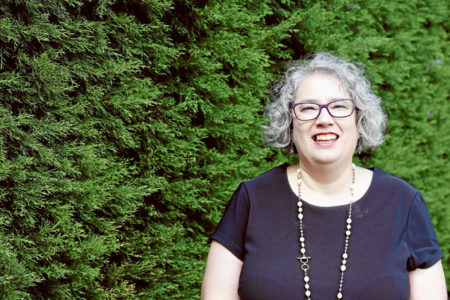Passover was a bloody business. The Jewish historian Josephus informs us that around a quarter of a million lambs were sacrificed each year during the festival; an overstatement to be sure, but indicative of the scale of butchery involved. In his account of the Last Supper, Mark places Jesus and his disciples together in the midst of the chaos.
Mark 14:12 tells us that the disciples ask Jesus about where they will eat the Passover meal “while they were sacrificing the Passover lamb”. We are to imagine Jesus and his followers at the heart of the temple precincts, full participants in the rituals of Israel’s cultic life, wielding the knife while one of the several hundred priests on duty held the unblemished lamb still and ready for the decisive cut.
Yet of course for Mark, this scene is only preparatory. The following verses shift the reader’s attention away from temple and priesthood and sacrifice to home and table and meal. The real preparations are those related to the celebration of the Passover meal. It is in the context of that meal that the new significance of the Passover is revealed.
This decisive shift in the gospel account has struck me with renewed force in recent days in the light of conversations, reading and reflection, leading to the thought that perhaps there is nothing more crucial to the life and health of the discipleship community today than that we learn how to take the church back home.
Conversations about the mission of the church have only served to reinforce the sense that we invest too much of our time, energy and resources into the upkeep of the ‘temple’. In the process, we preserve a form of faith and following determined by our relation to central structures and buildings, rather than living relationships and encounter.
Last month, The Huffington Post ran an article about St Lydia’s Dinner Church in Brooklyn, New York. Reading about the wonderful example of the five-year-old ‘micro-church’ congregation – where everything takes place around the table – the words of their minister, Rev Emily M D Scott, provoke reflection.
“We’ve designed a space to direct people toward God, not by turning their eyes to a far-removed altar, but by turning instead to one another,” Ms Scott wrote.
“The most dominant feature will be three ovular tables for ten…And what happens around those tables, designed to encourage the people of God to see one another, face to face? I would argue that justice, too, begins on a micro-scale at our church. It starts small, with relationships built around the table. I believe that every time a congregation sits down with someone from whom they would otherwise be divided, justice is made.”
Participating in a simple but regular gathering of friends around a meal and a pattern of prayer, ritual and conversation reminds me each week that such gatherings nurture not just life but faith.
In his book, Eating Heaven, Simon Holt expresses it well: “The table beckons. It beckons because, at its core, the table is about such fundamentally human things as intimacy and family, identity and communication, reconciliation and romance, covenant and community, redemption and friendship, sustenance and celebration, beginnings and endings.” As one who has spent the whole of my adult life in the institutions of the church, I confess that this is my experience.
For the sake of God, ourselves and the world, we need to learn what it means to reorientate the life of the church away from temple, altar, sacrifice and priests and around the home, table, meal and friends. Here are three ideas about how it might be done.
Reorientate worship around the preparation and eating of a community meal. Take the customary liturgical pattern of ‘preparation, word, response’ and use it as the framework for preparing a meal, eating together, and serving each other and the world through prayer and clearing away. Place the bread and wine of the Eucharist back into the context of a shared meal. Make it simple, so that everyone can get involved, and small-scale, so that everyone can sit around the one table. Don’t be tempted to make it bigger, just do it more often with different people.
Relocate church back into the home. Run an experiment for a month. If you are a small congregation, you might be able to all gather in one house. Or perhaps you will need two, three or 10 different domestic locations. Do all the things that you would normally do in church: sing together, pray together, listen to God’s word, talk to one another. But don’t do it alongside your regular Sunday worship in the church building. Do it instead of that. Let people know that they are as welcome in your homes as they are into the church building. Meet at different times of the week. Then, after the experiment is over, ask yourself what was different, what changed, what you learned and, crucially, what your church buildings are actually for.
Re-engage with your fellow disciples as fellow disciples. Find ways of asking each other not just “how was your week?” but “how and where is your faith?” Tell stories and listen to each other, especially to members of the community that often struggle to find a voice in our normal patterns of church life. And talk to each other about ways that together you can serve Christ through serving one another and the world.
When you have heard the word of God, tell each other what difference it should make. When you take the collection, talk about what the money will be used for. When you pray for the world, do more than just mention names and places and talk about relationships, struggle, frustration, fear. It is easier to do all that sitting around a table, but it isn’t impossible to begin to do it Sunday by Sunday in the regular round of church services.
“Where do you want us to go…?” the disciples asked Jesus. It’s time we asked that question again with renewed urgency.
* Image by Luke Smith on flickr




